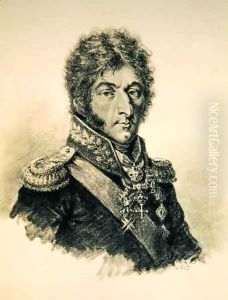Etienne-Gustave Aubin Paintings
Étienne-Gustave Aubin was a French painter and illustrator known for his contributions to the artistic movements of the late 19th and early 20th centuries. Born on February 1, 1886, in Paris, France, Aubin was immersed in an environment that was witnessing a great flourishing of the arts, particularly in Paris, which was the epicenter of innovation in painting and the visual arts.
Aubin's early life is not extensively documented, but it is known that he developed his artistic skills at a young age. He likely attended one of the many prestigious art schools in Paris, such as the École des Beaux-Arts, where he would have received formal training in the techniques and styles of the time. His early work was influenced by the Impressionist movement, which was still very much alive during his formative years as an artist.
As he matured, Aubin's style evolved, reflecting the changes in the artistic landscape of the time. He was known to have experimented with various styles, including Post-Impressionism and Symbolism. His paintings often depicted everyday scenes, landscapes, and figures, with an emphasis on capturing the mood and atmosphere rather than strict realism. Aubin’s illustrations also gained recognition, and he contributed artwork to various publications, which was a common practice for artists seeking to reach a broader audience.
Throughout his career, Aubin exhibited his work at several important venues, including the Salon des Indépendants and the Salon d'Automne, which were critical platforms for contemporary artists to showcase their work alongside their peers. His participation in these exhibitions indicates that he was an active member of the artistic community and that his work was well-regarded by his contemporaries.
Aubin continued to paint and exhibit throughout his life, adapting to the changing tastes and artistic movements of the time. However, he remained relatively obscure compared to the leading artists of his generation. His death on November 27, 1969, marked the end of a long career that spanned a dynamic period in art history.
Today, Étienne-Gustave Aubin's work is appreciated by art historians and collectors who have an interest in the less prominent figures of early 20th-century French art. His paintings can be found in private collections and occasionally appear in auctions, where they provide insight into the diverse and vibrant art scene of his time.
